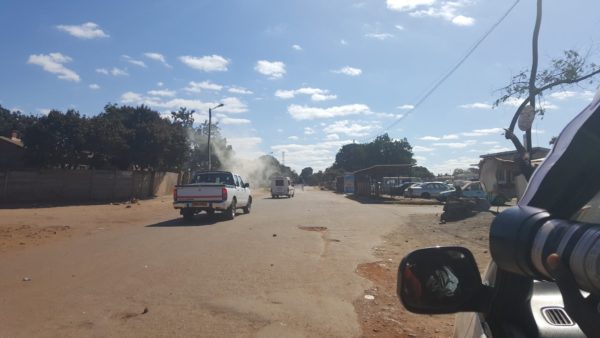
The recent political developments, which has seen civil unrest characterised by massive protests due to governance issues has led to confrontation between the police and civilians. Teargas has been used countless times to disperse crowds and in unfortunate incidences bystanders have been caught in the crossfire.
Evans Masitara
The immediate effects of teargas are irritation of the mucus membranes causing tears, painful eyes, shortness of breath and at times chemical burns to the skin. Usually these symptoms commence 30 to 60 seconds after exposure and can last for an hour to 24 hours after removal from contaminated space, although in extreme cases teargas can cause blindness, cardiac arrest, and death. People with pre-existing medical conditions such as Asthma, heart disease and TB may require hospitalisation and respiratory support. A lot of people have not paused to consider the long term medical effects of teargas exposure. This causes a risk to police officers, protestors, civilians and journalists.
Teargas formally known as lachrymatory agent or lachrymator is a chemical weapon. The Chemical Weapons Convention (CWC) prohibits use of teargas and pepper spray in warfare, but ironically allows its use for crowd control. CWC stipulates that effects should disappear shortly after exposure. It is also not allowed to fire teargas into enclosed spaces such as rooms and motor vehicles. Research into the effects of exposure has been limited due to fear of litigation by authorities and the ethical implications of clinical trials. In a 1987 attack on protestors in South Korea, 351 000 teargas canisters were fired. Scientists managed to positively link a surge in miscarriage, still births, delayed menses, heart and liver disease to the teargas exposure. In 2011, 54 deaths were attributed to teargas in Bahrain.
A case of serious vascular injury from teargas shells has been reported in Iran, with associated nerve injury of 44% and amputation 17%. Studies done in Turkey showed that tear gas victims suffered lung damage with associated chronic reduced lung capacity. In Chile teargas use was temporarily banned in 2001 following positive linkages of teargas with foetal harm and miscarriage. These examples should make us think twice regarding the indiscriminate use of teargas on Zimbabweans.
At room temperature teargas is found in a solid state. It is at times dissolved in methyl chloride, which has been positively identified as an agent that causes cancer. It is logical to deduce that constant exposure to tear gas increases your likelihood of getting cancer. It is my firm belief that the right to health is a fundamental human right which is part of the “Bill of Rights’ in our constitution. Endangering the health and lives of thousands of Zimbabweans, is not only cruel but reckless. The authorities should find alternative means of crowd control which do not endanger the health of the public.
The other worrying trend is the use of the water cannons with blue liquid. People exposed to that liquid have complained of severe itchiness and burning sensation. Citizens deserve full disclosure by manufacturers and police departments of the material data safety sheets of all chemicals used in crowd control. Manufacturers must be held responsible for the health effects, both acute and chronic, of the chemicals they create. Police officers must be educated about the risks of the chemicals they disburse and be held responsible for the aftercare of those they expose. I would like to take this opportunity to encourage restraint amongst our law enforcing agents as far as using these harmful commodities is concerned as they are also risking their own heath. I would also like to urge our scientists to conduct local studies so that we can justify an end to this primitive method of crowd control. Last but not least, may the protestors demonstrate peacefully without interfering with operations of other Zimbabweans so that the police may find no excuse to unleash these harmful substances.
A healthy nation is a productive nation! Let’s build a new Zimbabwe !
- Chamisa under fire over US$120K donation
- Mavhunga puts DeMbare into Chibuku quarterfinals
- Pension funds bet on Cabora Bassa oilfields
- Councils defy govt fire tender directive
Keep Reading
Evans Masitara is a health, human rights activist and former vice-president Zimbabwe Hospital Doctors Association. He writes in his individual capacity. Email: [email protected]











